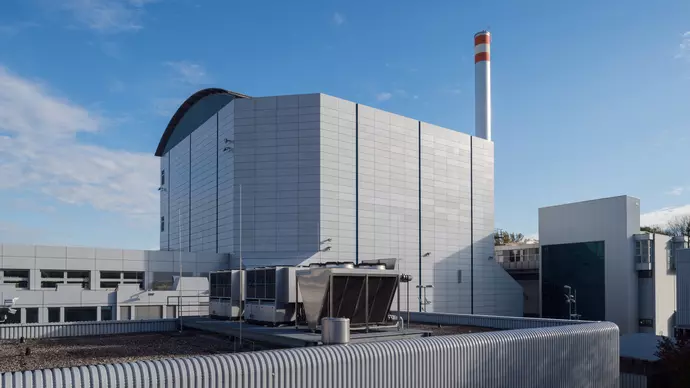Project conversion to Low Enriched Uranium gets political support
An important step in the future of the major research facility FRM II: The political sector has announced its support for conversion of the Technical University of Munich (TUM) research neutron source reactor to fuel elements based on Low Enriched Uranium (LEU). The responsible Bavarian State Ministry of Science and the Arts has announced its support for the plan. The decision was preceded by successful research at TUM on theoretical possibilities for conversion. Preparations for the new fuel’s approval procedure have now been initiated.
Bavarian Minister of Science and the Arts Markus Blume said: “We want Germany’s most powerful research reactor to operate in the future with the most advanced Low Enriched Uranium fuel – and at the same performance levels as in the past. This will secure the neutron research which is elementary to so many future-oriented fields at the center of scientific activity in Bavaria. It is also an investment in the further development of these fuels. We are convinced: Strength in research and open-mindedness in technology without ideological tunnel-vision are essential prerequisites for a good and secure future.”
TUM President Prof. Thomas F. Hofmann commented: “We are very pleased by this positive reaction from the political sector. The research reactor is an irreplaceable tool for science. The neutrons it generates enable non-destructive testing for example of batteries and of materials for high-performance gas turbines. The research reactor is also used in the manufacture of cancer medications and was even involved in the investigation of mRNA vaccines.”
Corey Hinderstein, Deputy Administrator for Defense Nuclear Nonproliferation at the National Nuclear Security Administration of the United States Department of Energy said: „The United States applauds the Technical University of Munich, Germany, and the Bavarian State in their decision to pursue a low-enriched uranium fuel for the FRM II reactor. This decision demonstrates a sincere commitment to HEU minimization and was made possible only after years of technical analysis to establish the technical basis for this landmark announcement. The National Nuclear Security Administration of the United States Department of Energy looks forward to our continued collaboration with TUM on this conversion project. We recognize that a timely and successful conversion of FRM II is key to the future viability and long-term operation of the reactor.“
Complicated research
An auxiliary condition in FRM II’s third partial permission provides for conversion to a fuel containing no more than 50% uranium-235 enrichment, as soon as the new fuel is developed, qualified and industrially available. Complicated computer simulations and complex calculations have proven that enrichment of the fissionable uranium-235 of under 20 percent is viable, when monolithic uranium-molybdenum is used as a fuel material.
The next step is the practical realization of the conversion, whose theoretical viability has been determined and confirmed by independent expert teams. Here a cross-departmental project team at the FRM II will conduct further optimizations in the fuel element design over the next few years and will prepare initiation of the approval procedure as well as the procurement of new fuel elements. The necessary research activities at the TUM Center for Nuclear Safety and Innovation will continue parallel to the completion of technical and nuclear law aspects.

